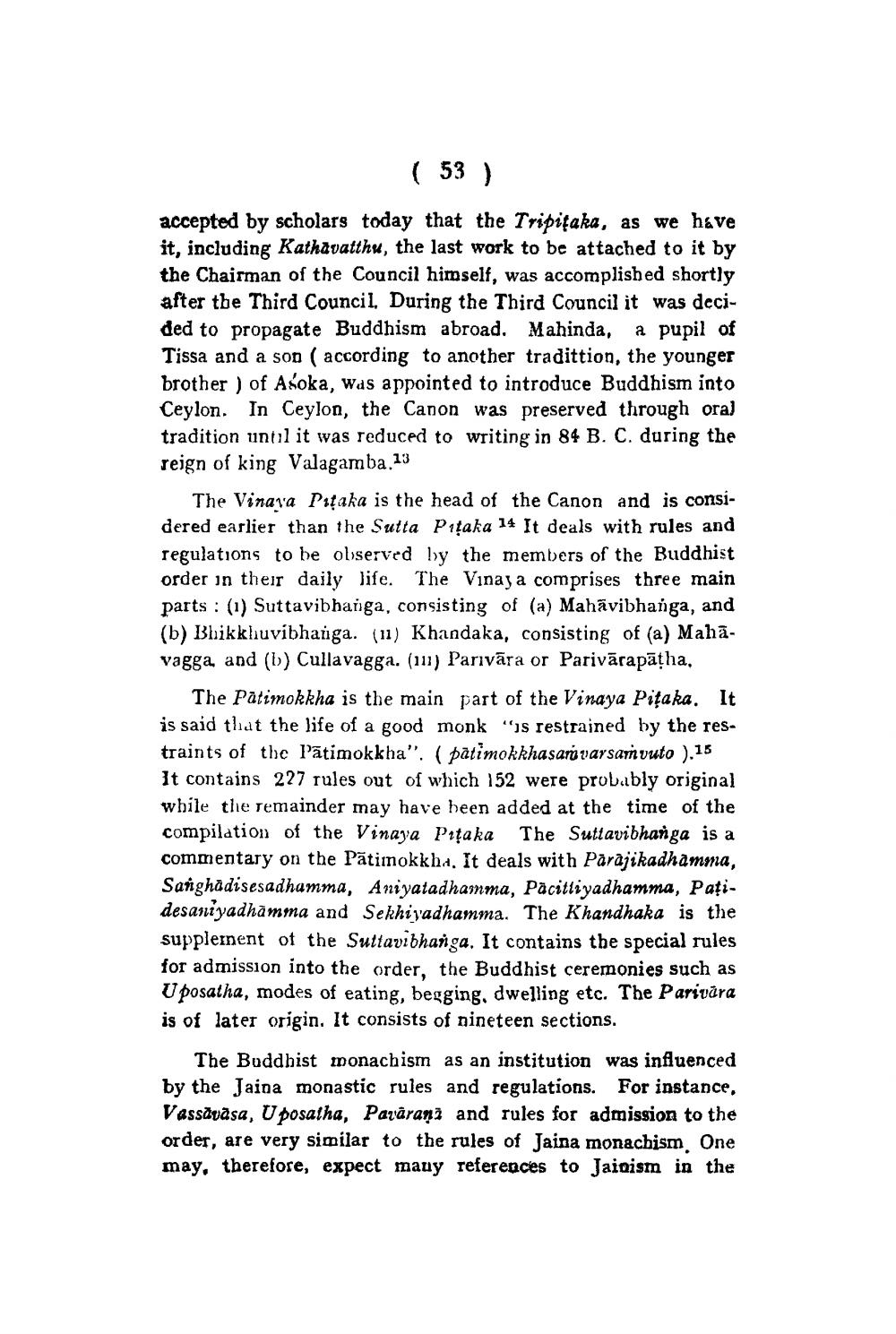________________
( 53 )
accepted by scholars today that the Tripitaka, as we have it, including Kathavatthu, the last work to be attached to it by the Chairman of the Council himself, was accomplished shortly after the Third Council. During the Third Council it was decided to propagate Buddhism abroad. Mahinda, a pupil of Tissa and a son (according to another tradittion, the younger brother) of Asoka, was appointed to introduce Buddhism into Ceylon. In Ceylon, the Canon was preserved through oral tradition until it was reduced to writing in 84 B. C. during the reign of king Valagamba.13
The Vinaya Pitaka is the head of the Canon and is considered earlier than the Sutta Pitaka 14 It deals with rules and regulations to be observed by the members of the Buddhist order in their daily life. The Vinay a comprises three main parts (1) Suttavibhanga, consisting of (a) Mahavibhanga, and (b) Bhikkhuvibhanga. (11) Khandaka, consisting of (a) Mahavagga, and (b) Cullavagga. (111) Parivara or Parivārapāṭha,
The Patimokkha is the main part of the Vinaya Pitaka. It is said that the life of a good monk "is restrained by the restraints of the Patimokkha". (patimokkhasar varsamvuto ).15 It contains 227 rules out of which 152 were probably original while the remainder may have been added at the time of the compilation of the Vinaya Pitaka The Suttavibhanga is a commentary on the Patimokkha. It deals with Parajikadhamma, Sanghadisesadhamma, Aniyatadhamma, Pacittiyadhamma, Pațidesaniyadhamma and Sekhiyadhamma. The Khandhaka is the supplement of the Suttavibhanga. It contains the special rules for admission into the order, the Buddhist ceremonies such as Uposatha, modes of eating, begging, dwelling etc. The Parivara is of later origin. It consists of nineteen sections.
The Buddhist monachism as an institution was influenced by the Jaina monastic rules and regulations. For instance, Vassāvāsa, Uposatha, Pavarana and rules for admission to the order, are very similar to the rules of Jaina monachism. One may, therefore, expect many references to Jainism in the




